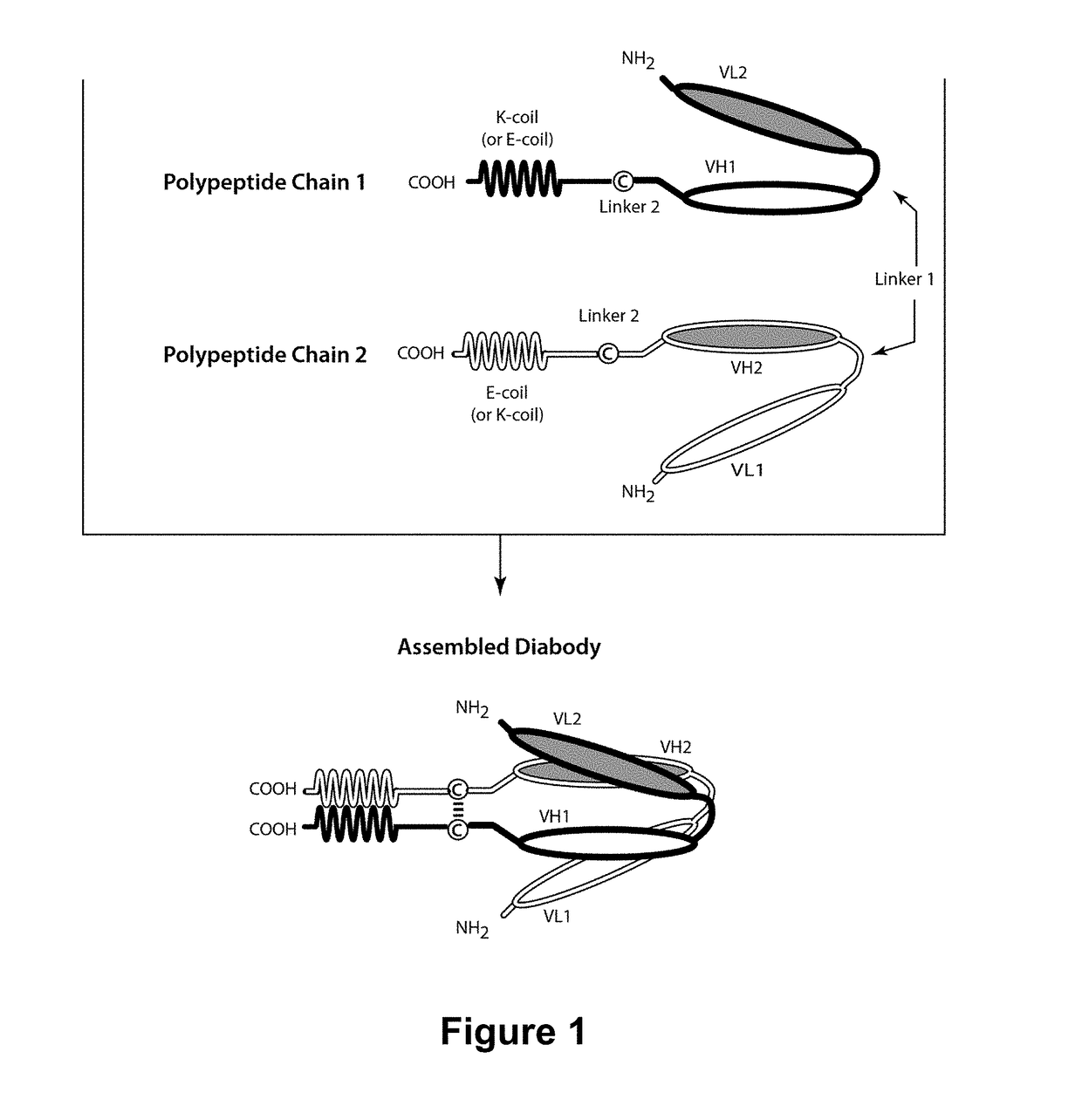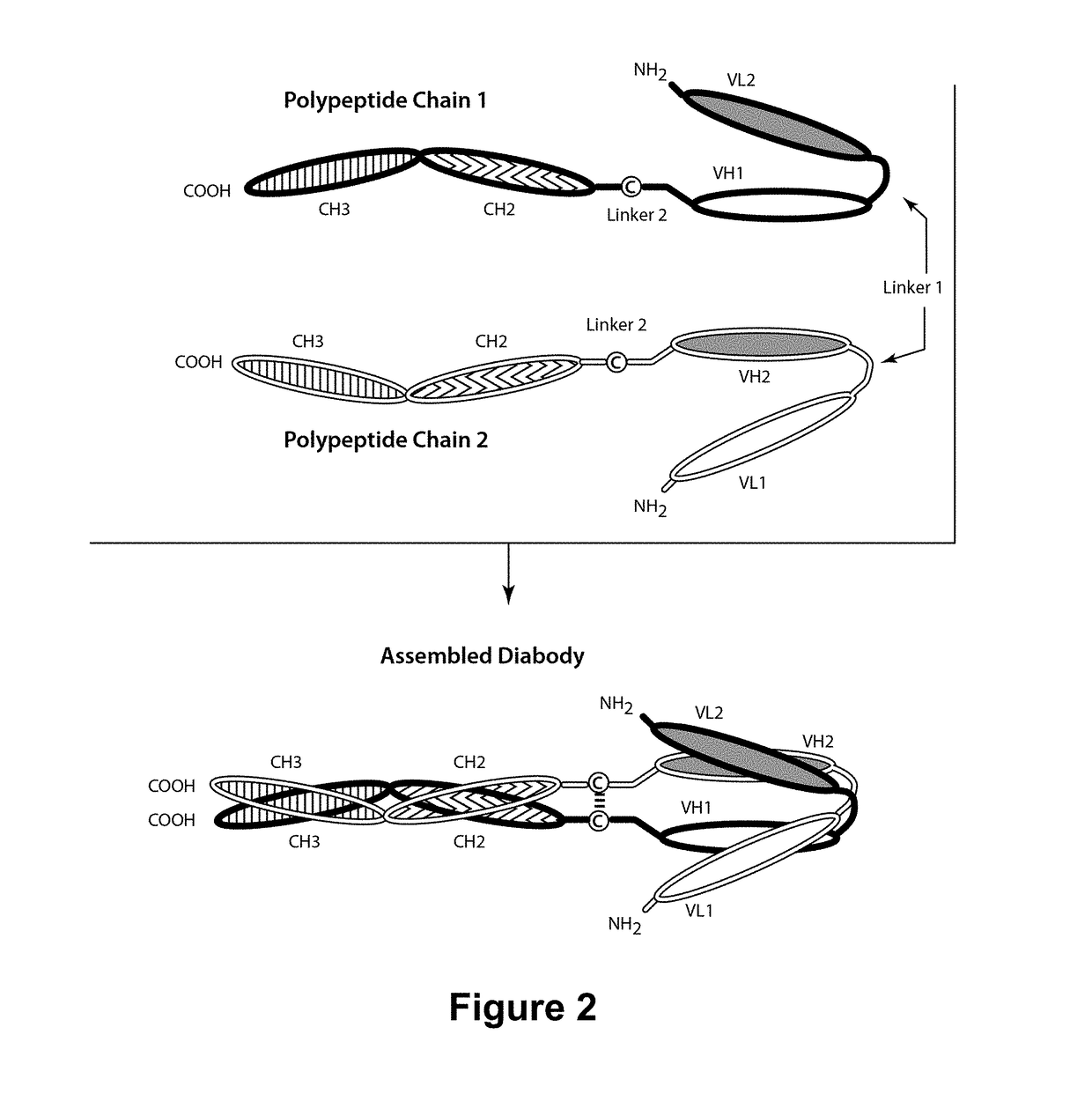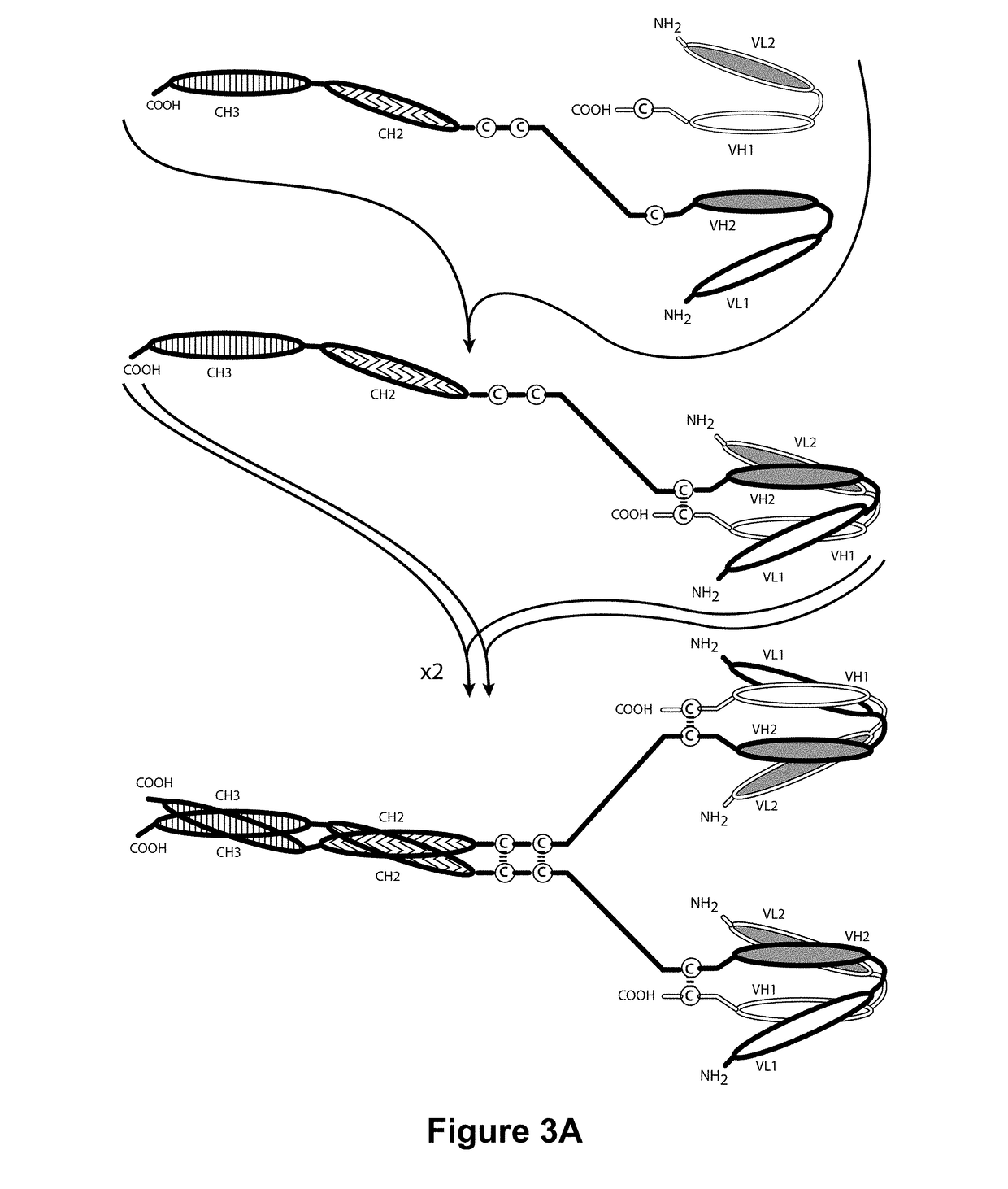ROR1-Binding Molecules, and Methods of Use Thereof
a ror1-binding molecule and ror1-binding technology, applied in the field of optimizing ror1-binding molecules, can solve problems such as poor clinical outcomes, and achieve the effect of enhancing the serum half-life and reducing affinity
- Summary
- Abstract
- Description
- Claims
- Application Information
AI Technical Summary
Benefits of technology
Problems solved by technology
Method used
Image
Examples
example 1
Optimization of Anti-ROR1-VL and Anti-ROR1-VH
[0412]In order to obtain optimized anti-ROR1 antibody species that exhibit improved affinity for human ROR1, polynucleotides encoding the parental anti-ROR1 antibody VL and anti-ROR1-VH Domains (i.e., anti-ROR1-VL or anti-ROR1-VH, respectively) were subjected to mutagenesis. The VL Domain variants were designated “anti-ROR1-VL(2),”“anti-ROR1-VL(3),”“anti-ROR1-VL(4),”“anti-ROR1-VL(5),”“anti-ROR1-VL(6),”“anti-ROR1-VL(7),”“anti-ROR1-VL(8),”“anti-ROR1-VL(9),”“anti-ROR1-VL(10),”“anti-ROR1-VL(11),”“anti-ROR1-VL(12),”“anti-ROR1-VL(13),” and “anti-ROR1-VL(14),”and the VH Domain variants were designated “anti-ROR1-VH(1),”“anti-ROR1-VH(2),”“anti-ROR1-VH(3),”“anti-ROR1-VH(4),”“anti-ROR1-VH(5),”“anti-ROR1-VH(6),” and “anti-ROR1-VH(7).” The amino acid sequences of these variants are provided above, the mutations and the corresponding SEQ ID NOs. are summarized in Table 6.
TABLE 6Light ChainKabat Residue No:17204954n / a667192SEQ ID NO: 8Residue No:SEQ161...
example 2
Further Optimization of Anti-ROR1 Variable Domains and Generation of Bispecific Three Chain Diabodies
[0423]To further optimize the anti-ROR1-VL and anti-ROR1-VH Domains, several changes were introduced into the anti-ROR1-Variable Domains to reduce immunogenicity. The parental anti-ROR1-VL Domain and the optimized anti-ROR1-VL(2) Domain were modified to remove an extra glycine (G) residue present between Kabat positions 63 and 64 (corresponding to position 67 of SEQ ID NO:6 and SEQ ID NO:11). The resulting anti-ROR1-VL Domains, designated “anti-ROR1-VL(1)” and “anti-ROR1-VL(14)” (SEQ ID NO:10 and SEQ ID NO:23, respectively, also see Table 6 above), were incorporated into ROR1×CD3 bispecific diabodies having two or three polypeptide chains and paired with different anti-ROR1-VH Domains as described in more detail below.
[0424]The anti-ROR1-VH Domain of such molecules was modified to remove two promiscuous high affinity MHC class II binding sequences present in CDRH1 and CDRH2. Specific...
example 3
Cytotoxicity Studies
[0435]The ability of the bispecific ROR1×CD3 two and three chain diabodies DART-1 and DART-A to mediate redirected cell killing was assessed using the LDH release assay essentially as described in Example 1. For these studies ROR1×CD3 bispecific diabodies or a negative control diabody (lacking a ROR1-binding site) were incubated for 24 hours with effector pan T-cells and target tumor cells (JIMT-1 breast cancer cells, A549 lung cancer cells, HBL-2 mantle cell lymphoma cells) at an effector to target ratio of 10:1. In other studies, effector PBMC cells and target RECA0201 cancer stem cells were used at an effector to target ratio of 30:1. Five fold serial dilutions of DART-1, DART-A, and the negative control were utilized. Representative cytotoxicity curves for each target tumor cell type are presented in FIGS. 13A-13D. In further studies, the ability of the bispecific ROR1×CD3 three chain diabodies DART-A, DART-C and DART-D to mediate cytotoxicity was assessed us...
PUM
| Property | Measurement | Unit |
|---|---|---|
| period of time | aaaaa | aaaaa |
| time | aaaaa | aaaaa |
| time | aaaaa | aaaaa |
Abstract
Description
Claims
Application Information
 Login to View More
Login to View More - R&D
- Intellectual Property
- Life Sciences
- Materials
- Tech Scout
- Unparalleled Data Quality
- Higher Quality Content
- 60% Fewer Hallucinations
Browse by: Latest US Patents, China's latest patents, Technical Efficacy Thesaurus, Application Domain, Technology Topic, Popular Technical Reports.
© 2025 PatSnap. All rights reserved.Legal|Privacy policy|Modern Slavery Act Transparency Statement|Sitemap|About US| Contact US: help@patsnap.com



